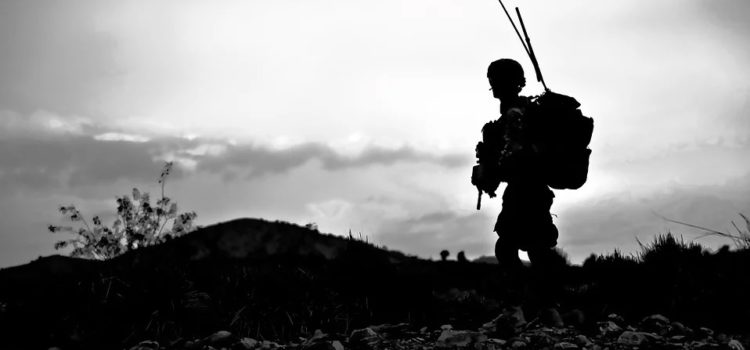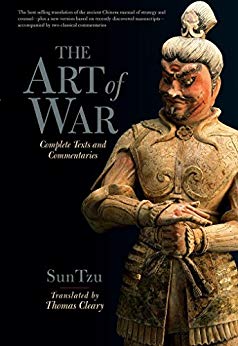

This article is an excerpt from the Shortform summary of "The Art of War" by Sun Tzu. Shortform has the world's best summaries of books you should be reading.
Like this article? Sign up for a free trial here .
What is Sun Tzu’s strategy for battle in The Art of War? Why is terrain so important to Sun Tzu’s overall strategy?
Within the strategy of successful leadership, you must understand both the types of terrain and grounds on which battles may be waged. Terrain includes all physical elements of the land, and grounds refer to the psychological considerations encompassed in the land. We’ll cover the terrain to be aware of and other elements of Sun Tzu’s strategy for battle.
Sun Tzu’s Strategy: Know the Terrain
According to Sun Tzu’s strategy, there are multiple types of terrain, each with their advantages and disadvantages. Terrain works as a supplementary member of your force, aiding advantage and victory. You should have a strong sense of the surrounding terrain. The types of terrain and encompassing qualities are as follows:
Easily passable terrain: Terrain that allows both sides to move freely in and out.
- If you command this terrain first and occupy the easiest routes, you will have the advantage.
Hung up terrain: Terrain that is easy to enter but difficult to retreat from.
- If the enemy has taken this terrain but is not prepared, you can advance with the advantage.
- If the enemy is prepared, advancing brings no advantage and you may become stuck and unable to retreat if necessary.
Standoff terrain: Terrain that is unwelcoming to both sides, thereby creating disadvantages for both sides.
- If the enemy is positioned in this terrain, be wary of opportunities for gain on this terrain.
- If the enemy provides a means for you to gain advantage, hold your ground. They will be forced to either retreat or advance, and you can attack from your advantageous position.
Narrow terrain: Terrain that offers only a small parcel of land.
- If you get to this terrain first, occupy it completely and wait.
- If the enemy gets there first and occupies it, do not advance.
- If they get there first but fail to occupy the space, advance to gain the advantage.
Steep terrain: Terrain comprising any part of the land that slopes.
- Do not fight uphill on this terrain.
- If you get there first, set up high and wait for the enemy.
- If the enemy gets there first, retreat and fortify your defense position.
Wide-open terrain: Terrain that lends no advantages to either side.
- On this terrain, the momentum is equal.
- Do not advance or engage in battle on this terrain because there is no way to gain advantage.
Knowing the terrain is incredibly important when implementing Sun Tzu’s strategy for battle. Once you have assessed your opponent and the terrain, you will have a clear picture of where advantages lie and can be victorious. If you don’t assess either, you will lose.
The Nine Grounds
In addition to the terrain, there are nine types of “grounds” encompassed in armed conflicts, according to Sun Tzu’s strategy.
Ground of dissolution: Basically a civil war, in which two factions from the same territory war with each other.
- When troops battle close to home, their stability and endurance come into question.
Light ground: When you enter foreign territory but stay along the fringe.
- Light ground allows troops to retreat easily.
- Because light ground is easy to retreat from, the minds of the troops are not yet overcome by the realities of their duty, making them less effective.
- When on light ground, move swiftly to avoid wandering minds and waning courage.
Ground of contention: Land that is advantageous for whoever claims it first, either you or your enemy. This is an important element of Sun Tzu’s strategy.
- Examples include any natural barricades or strategic routes.
- If you get to this land first, occupy it.
- If the enemy gets there first, do not confront and attack. They have the advantage of the land on their side.
Trafficked ground: Land with many avenues for entrance and retreat that is easily accessible.
- Allow these routes to stay open so as to not cut off supplies or lose advantage.
Intersecting ground: Land surrounded by population on three sides.
- The first to gain this land gains access to all three territories.
- If you are able to occupy this land and can earn the allegiance of the people, you will win.
- If you do not earn their allegiance, you are in trouble.
Heavy ground: When you enter foreign territory and entrench your troops deep within it. This is dangerous but important to Sun Tzu’s strategy.
- Heavy ground is difficult to retreat from.
- Invaders become tougher and stronger the farther they enter into enemy territory.
- Once on heavy ground, your troops become resigned to the fact that there is no easy retreat. They become geared to fight to the death.
- When in heavy ground, amass supplies and treat the locals humanely.
Bad ground: Land with difficult-to-pass natural features and which provides no stability for fortifying your positions.
- Bad ground provides no advantages and should be vacated quickly.
Surrounded ground: Land that is narrow and difficult to get into and convoluted to get out of.
- Surrounded ground allows enemy forces to trap you and defeat you, even if you are stronger.
- If caught in surrounded ground, use unorthodox tactics to fight.
Dying ground: Land on which you can survive if your attack is swift and die when it is not.
- The land is such that movement has become restricted and your only choice is to fight.
- When your troops know there is no way out but to fight, they will do so with all their strength.
Understanding How Grounds Equate to Victory
Why is Sun Tzu’s Art of War strategy so focused on terrain? By nature, leaders place their troops in harm’s way. Thus, all aspects of terrain, ground, benefits and dangers, and humanity must be assessed.
Therefore, when considering the state of your troops in relation to the grounds, Sun Tzu’s strategy is as follows:
- Create emotional and mental unity among the troops on ground of dissolution.
- Maintain contact on light ground.
- Keep your troops close and agile on ground of contention.
- Fortify your troops’ defenses on trafficked ground.
- Create strong alliances on intersecting ground.
- Provide proper provisions on heavy ground.
- Push your troops forward on bad ground.
- Tighten your front on surrounded ground.
- Be honest about death on deadly ground.
Sun Tzu’s Strategy: The Use of Weapons
Weapons are not relegated to guns, tanks, and ammunition. A weapon is any physical element that assists in battle, according to Sun Tzu’s Art of War strategy.
Fire Attacks
Fire attacks come in five forms: burning people, burning provisions, burning tools, burning storage facilities, and burning arms. The use of fire should be rational and for a purpose.
Use fire not to destroy but to create opportunities. The use of fire should be to cause a disruption or vulnerability in your enemy or confuse them. When using fire attacks, the Art of War strategy is to follow-up swiftly to take advantage of the mayhem caused. Finding opportunities in chaos is an important element of Sun Tzu’s strategy.
- Once the fire is raging, it’s time to attack.
- When the fire has died down and people are back in control, the window for attack is closed.
Understanding when to set a fire means understanding the essential conditions for fire. Even if you would prefer to use fire in a different way, if the opportunity presents itself and conditions are right, take advantage.
- Fire is best set when the conditions are dry and windy, thereby allowing nature to help the fire grow.
- If you set a fire upwind, attack upwind.
- Do not put your troops in the line of fire.
- Do not go rogue and set fires when the conditions are not favorable.
- Know how to safeguard against a fire attack by using the weather patterns as guides.
Arms
Arms are an important element in any war strategy, including Sun Tzu’s strategy. The use of arms should be considered carefully and only when all other tactics have been exhausted. The main goal of conflict is to avoid direct battle and defeat.
Only mobilize armed forces when there is no choice but to do so. Do not allow anger, pride, or petty grievances to guide your decisions.
Only go to battle when it is advantageous or easy to do so. If it is not, do not advance.
Emotions are malleable. They come and go with the seasons. But a broken nation cannot be rebuilt to its former self, and the dead cannot be resurrected. Remember these solemn truths when deciding whether or not to use arms.
———End of Preview———

Like what you just read? Read the rest of the world's best summary of "The Art of War" at Shortform . Learn the book's critical concepts in 20 minutes or less .
Here's what you'll find in our full The Art of War summary :
- How to mislead your enemies to win the war
- Classic examples from Chinese history to illustrate Sun Tzu's strategies
- How to use spies to gather information and defeat your opponents






